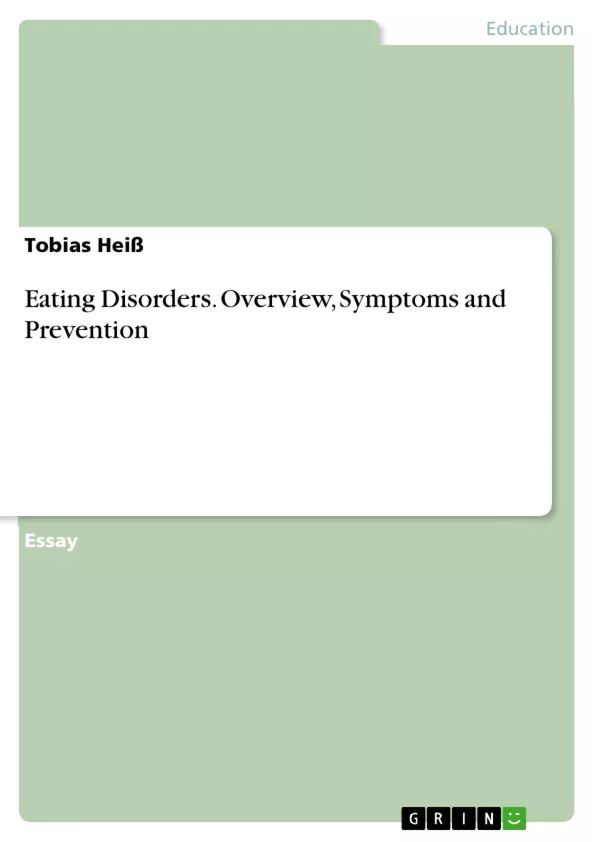Eating disorders have become a serious problem as a growing number of young women, children, and, increasingly, men, suffers from anorexia nervosa, bulimia nervosa, or binge-eating disorders. They are included in the category of mental and behavioral disorders and among the most common chronical health problems encountered in children and adolescents
Although girls are struggling with eating disorders ten times as often as boys, it is not to be labelled as a predominantly female problem, as men increasingly suffer from chronically obesity and other disorders. It should be a great concern to us all that eating disorders are omnipresent in the lives of many teenagers. Because adolescents spend a huge amount of their time in schools, this topic needs to be discussed and not kept secret. It is absolutely essential that we as caregivers not only keep our eyes open but also inform and educate teenagers about the imminence of eating disorders, because schools can not only be a decisive factor in encouraging eating disorders but also in preventing them.
Inhaltsverzeichnis (Table of Contents)
- Introduction
- Overview of Eating Disorders
- Bulimia Nervosa
- Anorexia Nervosa
- Binge-Eating Disorder
- Health Effects
- Symptoms and Causes
- Warning Signs for Caregivers
- Causes of Eating Disorders
- The genetic factor
- The biological factor
- The psychological factor
- The environmental and social factors
- The peer influence
- Prevention
- Three-Step Prevention
- Prevention Programs in Schools
- Treatment Methods
- References
Zielsetzung und Themenschwerpunkte (Objectives and Key Themes)
This research paper provides a comprehensive overview of eating disorders, focusing on the prevalence, health effects, symptoms, causes, and prevention strategies. The paper aims to raise awareness about the growing problem of eating disorders, particularly among young people, and to provide guidance for caregivers and educators on how to identify and address this issue.
- Prevalence of Eating Disorders
- Health Effects and Consequences
- Symptoms and Warning Signs
- Causes and Risk Factors
- Prevention Strategies and Treatment Methods
Zusammenfassung der Kapitel (Chapter Summaries)
The introduction highlights the increasing prevalence of eating disorders among young people, emphasizing the need for greater awareness and preventive measures. It examines the various types of eating disorders, including bulimia nervosa, anorexia nervosa, and binge-eating disorder, and their impact on physical and mental health. The paper also delves into the causes of eating disorders, exploring genetic, biological, psychological, environmental, and social factors that contribute to their development.
The section on prevention focuses on the importance of early intervention and education, particularly in school settings. It emphasizes the need for awareness about warning signs, the role of caregivers in identifying and addressing potential issues, and the implementation of effective prevention programs.
Schlüsselwörter (Keywords)
Eating disorders, anorexia nervosa, bulimia nervosa, binge-eating disorder, health effects, symptoms, warning signs, causes, risk factors, prevention strategies, treatment methods, genetic factors, biological factors, psychological factors, environmental factors, social factors, peer influence, school programs, caregivers.
- Citation du texte
- Tobias Heiß (Auteur), 2015, Eating Disorders. Overview, Symptoms and Prevention, Munich, GRIN Verlag, https://www.grin.com/document/1030366



